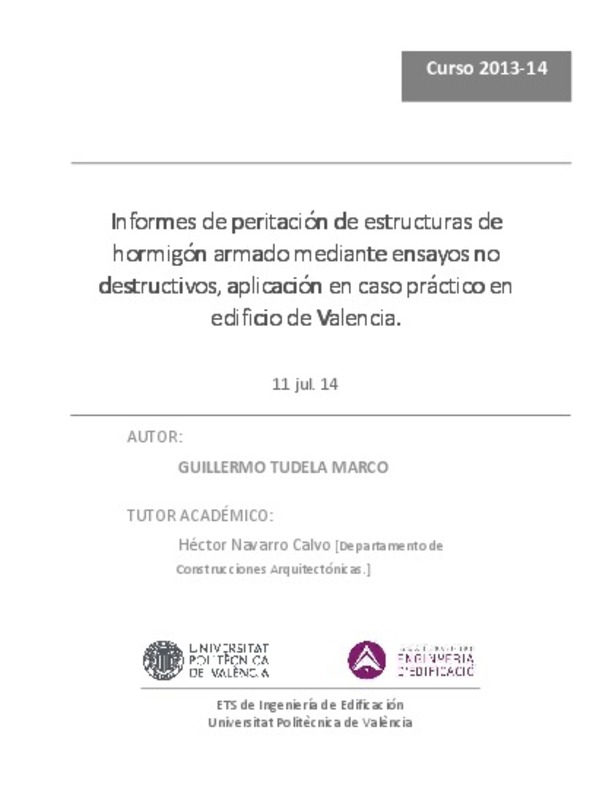JavaScript is disabled for your browser. Some features of this site may not work without it.
Buscar en RiuNet
Listar
Mi cuenta
Estadísticas
Ayuda RiuNet
Admin. UPV
Informes de peritación de estructuras de hormigón armado mediante ensayos no destructivos, aplicación en caso práctico en edificio de Valencia
Mostrar el registro completo del ítem
Tudela Marco, G. (2014). Informes de peritación de estructuras de hormigón armado mediante ensayos no destructivos, aplicación en caso práctico en edificio de Valencia. http://hdl.handle.net/10251/48354.
Por favor, use este identificador para citar o enlazar este ítem: http://hdl.handle.net/10251/48354
Ficheros en el ítem
Metadatos del ítem
| Título: | Informes de peritación de estructuras de hormigón armado mediante ensayos no destructivos, aplicación en caso práctico en edificio de Valencia | |||
| Autor: | Tudela Marco, Guillermo | |||
| Director(es): | ||||
| Entidad UPV: |
|
|||
| Fecha acto/lectura: |
|
|||
| Resumen: |
[ES] Este TFG se centra en la reparación estructural de estructuras de hormigón armado, y en cómo obtener información de dichas estructuras sin necesidad de causar daños. Esto se consigue mediante la combinación de Ensayos ...[+]
[EN] This final degree dissertation focuses on structural repair of reinforced concrete and how obtaining information from these structures without causing further damage. This is achieved by the combination of Non- ...[+]
|
|||
| Palabras clave: |
|
|||
| Derechos de uso: | Reserva de todos los derechos | |||
| Editorial: |
|
|||
| Titulación: |
|
|||
| Tipo: |
|
Localización
recommendations
Este ítem aparece en la(s) siguiente(s) colección(ones)
-
ETSIE - Trabajos académicos [2383]
Escuela Técnica Superior de Ingenieria de Edificación







